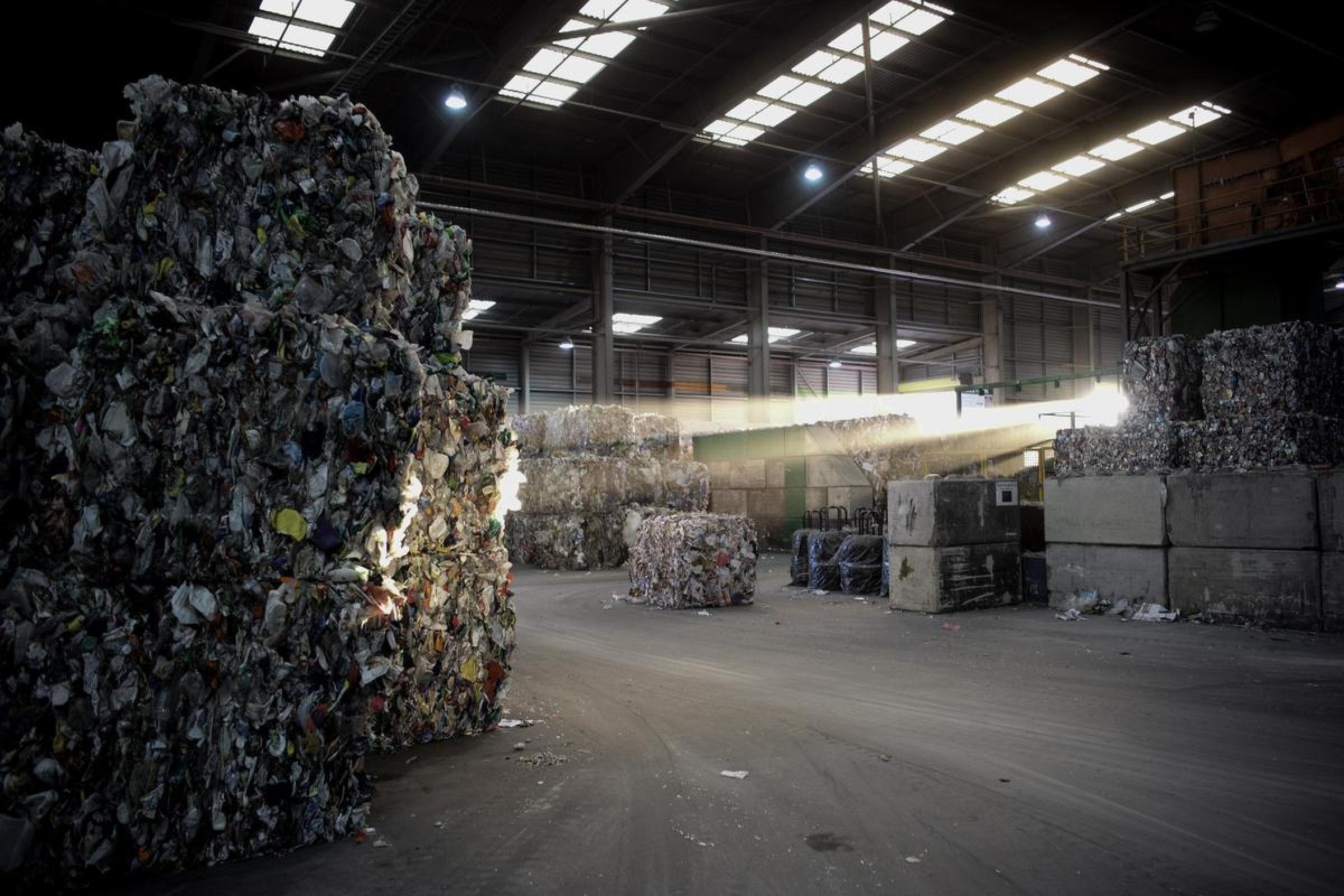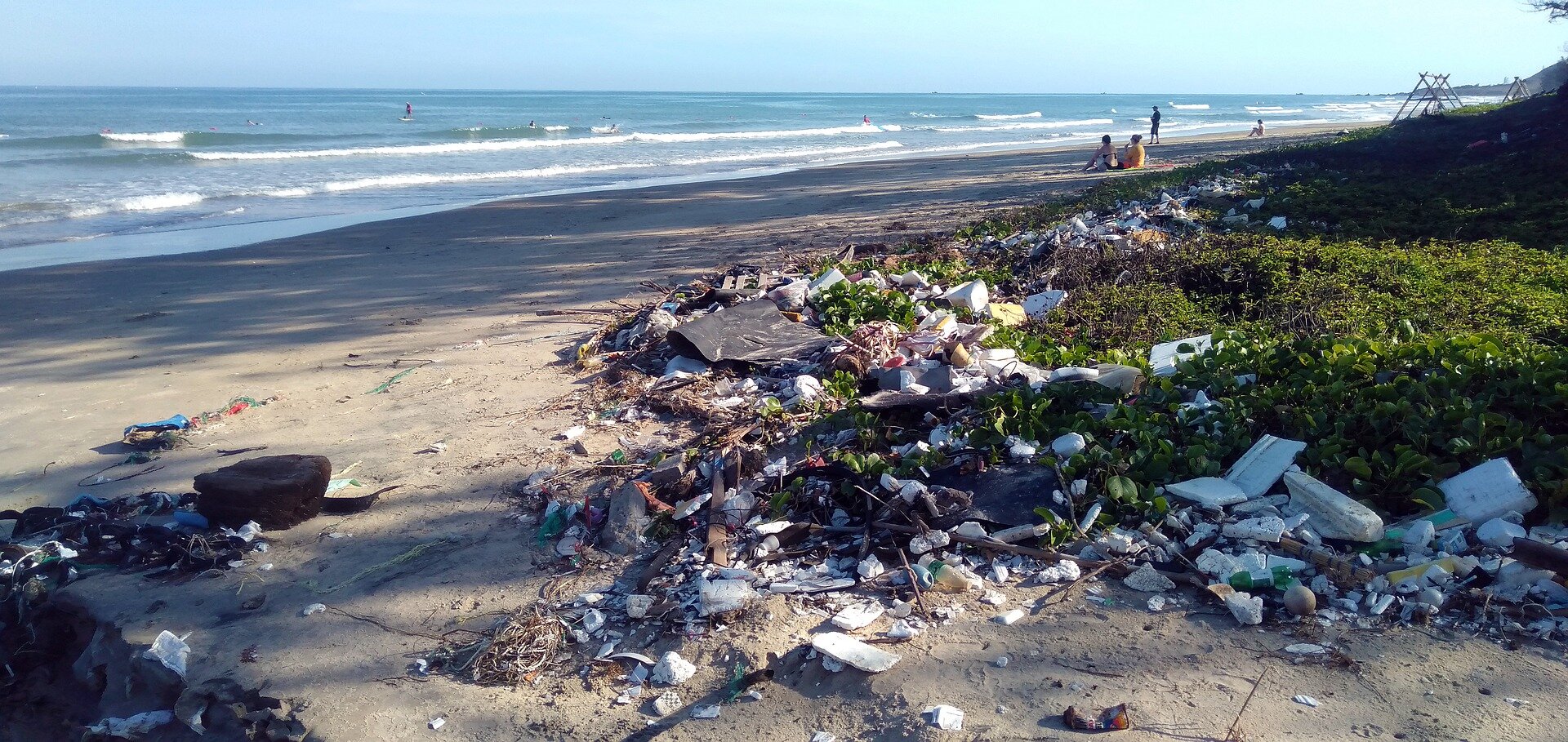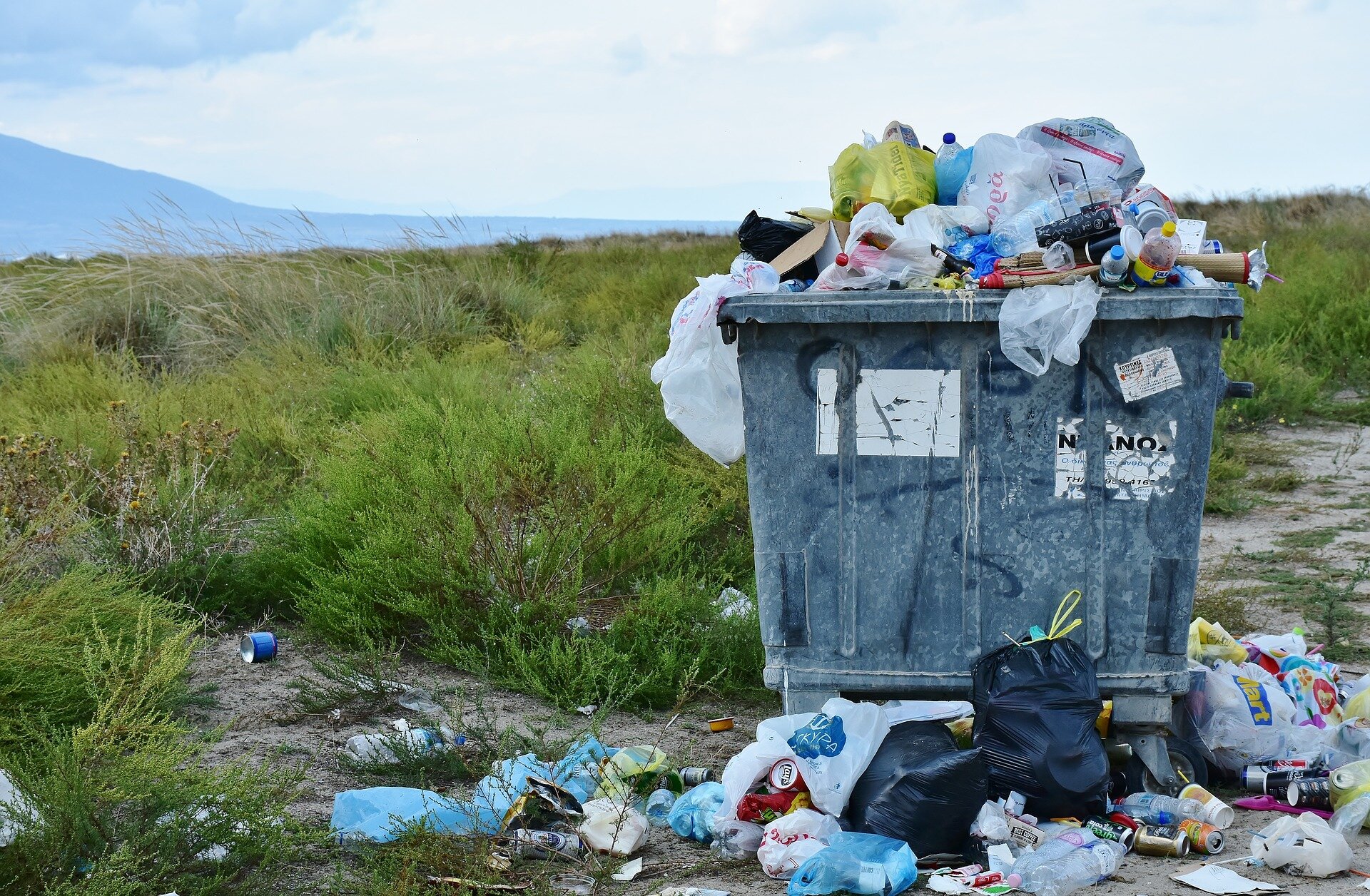
There’s a classic American 1960s comedy sketch where a character called The 2,000 Year Old Man is asked, among other questions, to name the greatest invention of his lifetime. His enthusiastic answer: clear plastic cling wrap. “You can put a sandwich in it,” the very senior citizen says. “You can look through it. You can touch it…It clings and sticks. It’s great!”
Imagine if The 2,000 Year Old Man had survived to the 21st Century, a time when annual plastic production has reached 381 million tons. Plastic encircles the planet, for better and worse. Synthetic polymer jackets keep us warm in winter’s chill, plastic packaging serves up prepared food for short workday lunch breaks, crisp out-of-season vegetables reach our grocery shelves in shrink-wrapped plastic — and plastic encases the very device you’re using to read this.
“It is the plastic age,” says Indian plastics maven P. Marimuthu. But the explosion of plastic in every corner of daily life has brought a pollution crisis. Plastic waste mars cities and towns, and contaminates the world’s soil, air, sea and freshwater. The safety of chemicals used in plastic food packaging and consumer products are a growing concern. Today, a quarter of Orb Media survey respondents in dozens of countries say they’re extremely worried about plastic’s effect on the environment, and on human beings. Plastic waste kills millions of animals each year. Parents worry over what to feed their children - and what to feed them with. What’s to be done? Here, we examine four aspects of the Plastic Question, and some promising and difficult responses.

A PLASTIC PROBLEM: Marine Waste Plastic
In his 30 years as a South African conservation officer, Basil Pather has raided illegal fishing trawlers, stalked armed poachers through dry grassland, and dived under the Indian Ocean to hunt coral thieves. None of it prepared him for the challenge of plastic. “There’s just a smothering, and an overwhelming sense that you can’t control it,” he says. At the coastal mangrove reserve where Pather is based, volunteers haul out between one and five tons of plastic waste every week.
The river estuary and beach are dotted with bright yellow bags stuffed with someone else’s dinner plates and deodorant. Every day there’s more. “There’s no one you can link it to,” Pather says, no chain of possession. “Plastic doesn’t have a name, except sometimes a label on a bottle. There’s no accountability.” An estimated 8 million tons of plastic waste flow into the oceans each year, where they kill wildlife and infiltrate the food chain. All species of sea turtle, and more than half of marine mammals and sea birds are affected by entanglement or ingestion of marine debris, causing 1.1 million animal deaths per year.(1)
Responses
Plastic Ban
Last June, India’s environment minister pledged to “eliminate all single-use plastics from our beautiful country” by 2022. The European Union wants to ban plastic straws and plates (2). More than 33 countries have local or national bans on plastic bags, but many of these aren’t enforced. When it comes to items like take-out containers, straws, and plastic shopping bags, “we're using a material that will last for, as far as we know, forever,” says Emma Priestland of Friends of the Earth. “But we're using this in applications that are used once, for a few seconds. It has no meaning to us. We discard it without any pause for what happens to it at the end of life.” That’s changing around the world.
No affordable, sustainable alternatives: Bans won’t work without affordable, sustainable alternatives and better waste management. And many “green” replacements for plastic, like paper bags, create more pollution than the polymer they’re meant to replace. More than a year after Kenya’s ban on thin plastic bags went into effect, bags of thicker plastic have filled the void. Swati Sambyal, of the Center for Science and the Environment in New Delhi, says reusable cloth bags, at a price range of between 50 and 150 rupees (between .60 and 1.80 Euros) “would be royally expensive” for poorer families. If reusable bags are to replace disposable plastic, they must be free or subsidized, she says. Merchants too, need alternatives. When she started a sorbet stand in Johannesburg, South Africa, Thula Matema was dismayed to learn that disposable wooden spoons were 10 times more expensive than plastic. “As a business owner, the cheapest thing is plastic,” she says.
KENYA HAS ARRESTED DOZENS FOR VIOLATING ITS PLASTIC BAG BAN.
PAPER STRAWS ARE IN STYLE.
INSPECTING A KENYAN MARKET FOR PLASTIC BAGS.
Circular Economy
The Circular Economy is a movement to get designers to create packaging and products that can be easily recycled or reused. Extended Producer Responsibility is a concept under consideration in Europe and elsewhere that would make companies responsible for the disposal of their consumer packaging, with penalties for non-recyclable items. This would push brands into the circular economy. Most of the unrecycled plastic processed by Suez Recycling & Recovery UK is black plastic (3), used for meat and microwave meals, and packaging made from combinations of plastic and other materials, like aluminum-lined crisp packets. “They are technically recyclable but there's not really a market for them,” says company spokesman Ben Johnson. “We'd like manufacturers to effectively use more simple constructions, to use more ubiquitous constructions, to use types of plastics that do have healthy recycling markets,” Johnson says at a recycling center in western England. “They'll work well in plants like this and we'll be able to keep them in a kind of circular use.”
Recycling and Microplastics: In one of the many paradoxes of plastic, reusable plastic bottles, which reduce waste and save energy, were found to contain more microplastic than single-use disposable bottles, in a study (4) by researcher Darena Schymanski in Münster, Germany. PET plastic bottles are routinely recycled into fibers and spun into polyester textiles including bedding (5) and clothes (6). But that bedspread of recycled plastic will become a source of microplastic pollution when it’s washed.
Education
Research shows that children who receive even a little environmental education will influence their peers (7) and parents (8) to stop littering (9). Basil Pather believes visits to the Beachwood Mangroves Nature Reserve by local schoolchildren have caused a reduction in the volume of plastic cascading into the mangrove reserve from villages upstream. “Once you get to the kids, we are making a difference,” he says. “Kids will reprimand their parents. They sheepishly listen to the kids.”
Old Habits Die Hard: For Grace Makopa, a student at Witwatersrand University in South Africa, litter is a source of anxiety because she’s used to creating it. “Everything now is suddenly environmentally friendly, while I come from a place where environmental health is not a big deal,” says Makopa, who’s from a working-class township. “You grow up and learn that ‘OK, I can just throw something out [on the ground]’. It becomes a part of you in a way.”

A PLASTIC PROBLEM: Microplastic in Food and the Environment
As the World Health Organization’s coordinator for safe drinking water, Bruce Gordon is usually responding to killer microbes like cholera and diarrheal diseases. Since Orb Media first reported microplastic contamination in tap water and bottled water from around the world, Gordon has the added responsibility of identifying what is known — and what’s not — about how plastic in drinking water might affect the world’s 7.7 billion people. Evidence of contamination is piling up. Recent studies have found microplastic in German mineral water,(15) South African tap water,(16) and Italian soft drinks.(17) No one yet knows if consuming microplastic is harmful or not, or if they accumulate in the human body. Researchers last month reported finding microplastic including polypropylene and polyethylene-terephthalate(18) in human stool.
“There’s a slew of missing information” when it comes to the human health effects of ingesting microplastic, Gordon says. Shellfish like oysters and mussels are known to contain microplastic, and microplastic fibers and particles have been found in the intestines of fish sold at markets around the world. We haven’t yet seen a study that would determine the presence of microplastic in packaged food items. You’re probably shedding microplastic while going about your daily business: Car tires are a major source. So are polyester, acrylic, and other synthetic clothes. A 2017 study(19) by European researchers revealed that a single five-kilogram machine load of polyester laundry can release as many as six million microplastic fibers into wastewater; a lot of those fibers end up in rivers and lakes.
Responses
Alternatives
One reason for the gross ubiquity of plastic is that it’s incredibly useful. But many consumers want alternatives that they believe are better for the environment, such as paper and glass. Others favor single-use plastic that is biodegradable or compostable. They may all be in for a shock.
Many alternatives pollute more: According to a 2016 study by the environmental consultancy Trucost (10), replacing plastic with alternatives like paper, aluminum, and glass in many common applications would increase annual environmental costs from $139 billion to $533 billion when the impact of making and transporting these heavier materials is factored in. “What is the alternative for plastic?” asks P. Marimuthu, a plastic manufacturer in Chennai, India. “Nobody gives an answer to this. If you don't give an alternative product, then banning plastics will not succeed.”
Bioplastic Isn’t Green: So-called compostable plastic bags, meanwhile, can’t biodegrade in landfills or in household compost. They have to be separated from other waste, and heated at an industrial facility to 70 degrees Centigrade (11). Bioplastic, made from plant material, has a similar carbon-chain molecular structure to plastic made from petroleum—and most of the same environmental drawbacks (12).
Paper Bags Are Worse. Seventy-three percent of Americans surveyed by Gallup believed paper bags were greener than plastic (13). Analyses of both materials’ life cycles, however, show that plastic bag production causes 60 to 70 percent less air pollution than paper (14). And because of the toxic emissions from paper mills, a plastic bag sent to a landfill actually produces 90 percent less water pollution than a paper bag that is recycled, researchers at the Royal Melbourne Institute of Technology found.
Filtration
Home Filtration New filters and other devices designed to capture microplastic fibers in the washing machine, before they are flushed into wastewater for treatment by inefficient plants, and released into public waterways, have entered the market. One item, the Cora Ball, is thrown in with the wash and catches between 26 and 35 percent of the fibers emitted in a washload before they enter the wastewater. Another product, an external washing machine filter, catches up to 87 percent (20). Researchers say using gentle detergents and washing on the gentle cycle causes less shedding. Machines that have a center agitator emit more fibers than those that don’t.
Consumers can’t solve it alone: “We are strong believers that this isn't something that should be borne entirely by the customer, and the Cora Ball cannot, was not designed to be, the only answer,” says inventor Rachael Miller of the Rozalia Project, a clean oceans organization. It’s asking too much of individual consumers to filter their wash and dispose of the collected microplastic fibers. The real answers, experts say, lie with the apparel industry, washing machine manufacturers, and wastewater treatment authorities. “We need to find design solutions at the beginning of their life to reduce the amount of shedding,” says Emma Priestland of Friends of the Earth.
THE CORA BALL CATCHES MICROFIBERS IN THE WASH.
THE GUPPYFRIEND IS A FILTER BAG FOR SYNTHETICS.

A PLASTIC PROBLEM: Chemicals in Food Packaging
Chemicals are integral to plastic; multitudes of chemical additives are used to make plastic products impact-resistant or soft, flexible or rigid, and temperature resistant. But many of these chemicals are known health hazards. Some are associated with cancer; others can play havoc on the body’s endocrine system, which can lead to problems including reproductive disorders and obesity.
Earlier this year, researchers compared a European Union registry of restricted hazardous chemicals with a separate list of substances approved for use in plastic - including food packaging.(21) Hundreds of chemicals were on both lists.
“What really is surprising and also a bit frustrating is that we see chemicals that are really well-studied, that are known to be hazardous, and still they are allowed and are used in food packaging,” says study co-author Jane Muncke, of the Food Packaging Forum, a research organization. For example, six plastic additives, called phthalates, that are banned from use in children’s toys are nevertheless permitted in European food packaging. Some manufacturers aren’t alarmed.
“Plastic, if you make [it] as per standard...as such plastic doesn't give any trouble to food contact,” says factory owner P. Marimuthu. Critics say safety standards are insufficient. And the process of making plastic is so volatile that it creates, and exposes consumers to, unapproved byproducts. In 2007, biochemist Emma Bradley(22) made, from scratch, six plastics used in food packaging. She knew all the chemicals used create fresh polypropylene (takeout containers), polyethylene (milk jugs), polystyrene (takeout containers), polyvinyl chloride (cling film), polyethylene terephthalate (bottles), and nylon (pouches). Still, Bradley’s analysis of her new plastics revealed chemicals she couldn’t identify.(23)
Responses
Abstain
To reduce your exposure to chemicals in plastic food packaging, experts recommend storing food in glass or stainless steel containers, and cooking more meals at home rather than buying prepared foods from supermarkets or restaurants. A 2017 study (24) in the journal Environmental Science and Technology found that one-third of U.S. fast-food packaging tested by researchers contained chemicals known as polyfluoroalkyl and perfluoroalkyl substances, which human and animal studies have associated with an elevated risk of high cholesterol, cancer, obesity, and immune suppression.
“We have to be okay with unpackaged food, we have to be okay with local and seasonal food, we have to be okay with wonky and ugly food as well,” says Laura Boyes, who runs a zero-packaging grocery in London. “And we have to understand what happens to get all this food on our plate in a restaurant.”
Safer Chemistry
One tool for brands and manufacturers is the International Chemical Secretariat’s “SIN List” (25) of substances likely to be banned in the future, and safer alternative chemicals. Writing in an industry newsletter, David Constable, science director at the Green Chemistry Institute of the American Chemical Society, warned (26), “if we continue to use the types of plastics that are currently in use, we will continue to be manufacturing a very large volume of very hazardous chemicals, some portion of which will find its way into the environment and into humans.”
Problem Replacements: Alternatives can have similar properties to the hazardous chemicals they’ve replaced. The widely-used plastic additive BPA, which has been found in 93 percent of the U.S. population, has been associated with chronic human health conditions (27) including diabetes, obesity, and infertility (28). But a 2018 study (29) reported that, in animal experiments, some BPA alternatives showed “similar biological effects” to BPA.

A PLASTIC PROBLEM: Difficult to Recycle
The UK recycles more than 70 percent of its packaging waste,(30) thanks to strong regulation of its landfills. That still means that tons of plastic isn’t. Most of the unrecyclable plastic at Suez Recycling & Recovery UK is black plastic,(31) used to package items like fresh meat and microwave dinners. Experts say these “junk” plastics, which are dyed black to create a “premium” look, should be replaced with higher-quality polymers.
Geraint Ashcroft, a retired engineer in Wales, was peeved to learn that in a country that consumes more than six billion packets(32) of crisps, or potato chips, each year, the bags weren’t being recycled. “I still like my bag of crisps,” Ashcroft says, “and I never said don't eat crisps. But we've got to get aware of what we're doing with those packaging afterwards.”
Brightly-colored metallized films like those used to extend the shelf-life of crunchy snacks are part of a range of hybrid packaging that actually can be recycled but which lacks the needed volume or infrastructure to make recycling economical.
“I can’t do anything with this,” says Amos Bonoko, who collects plastic and paper waste for recycling from the streets of Johannesburg, South Africa. “There is no market - no one will take it.”
In the UK, these plastics are often burned as fuel for power plants. In South Africa, the nonprofit Dung Beetle Project is creating a low-cost machine that converts unrecycled plastic waste into fuel gas and diesel. One Dung Beetle can generate enough electricity for ten local homes, says co-cofounder Jeffrey Barbee. But whether it’s on an industrial or a community scale, waste-to-energy is a waste of energy when compared with recycling, says Arturo Castillo, an industrial ecologist at Imperial College.
Responses
Agitate
Public Pressure: Ashcroft, 61, started an online petition asking Walkers, the UK’s biggest crisp brand, to recycle its used packets. Activists turned up the heat by encouraging people to mail empty packets directly to Walkers. Thousands did so, Ashcroft says.
Corporate Engagement: Within weeks, Walkers (33) announced a program to collect empty packets for recycling into plastic-aluminum pellets for use in outdoor applications like park benches. “It just shows that if enough people try hard enough, then these companies can be made to change their mind,” Ashcroft says.
PEOPLE MAILED THEIR NON-RECYCLABLE EMPTIES TO WALKERS.
THOUSANDS DROPPED THEIR BAGS IN THE POST.
WALKERS PARENT PEPSICO RESPONDED BY STARTING A RECYCLING PROGRAM.
Innovate
New Packaging: Some US brands have tried using bags with a layer of polylactic acid, a corn-based biopolymer that can decompose in garden compost.
Fickle Consumers: The new bags were loud, and consumers rejected them (34). Polylactic acid packaging crinkled at volumes as high as 95 decibels (35), which “flies in the face of our desire for comfort,” a green industry journal observed. “We want the cool, compostable packaging, but we want it to sound, look and feel exactly like what we’re used to” (36).
COMPOSTABLE CHIP BAGS WERE TOO LOUD.
DESIGNER WESTIN BAXTER, WITH HIS RECYCLABLE CHAIR.
Entrepreneurs
Niche recycling: Nearly every plastic can be recycled, says Steven Clarke of TerraCycle, a specialty recycler. Often with a corporate sponsor, TerraCycle recycles items including cigarette butts, batteries, toothpaste tubes -- and, starting in December 2018, crisp packages. In South Africa, the Dung Beetle Project says its low-cost pyrolysis reactor is a solution for communities that are inundated with plastic waste, but don’t have advanced waste management systems. The Dung Beetle turns plastic into fuel gas or low-sulphur diesel. The seaside city of Durban and the International Union for the Conservation of Nature are exploring ways to use Dung Beetle technology to help reduce coastal plastic waste.
Zero Waste: Waste-to-energy “is not truly a solution,” cautions Sherma Benosa of No-Burn, an environmental NGO in the Philippines. “It goes against the principle of zero waste” and may discourage recycling, she says.












